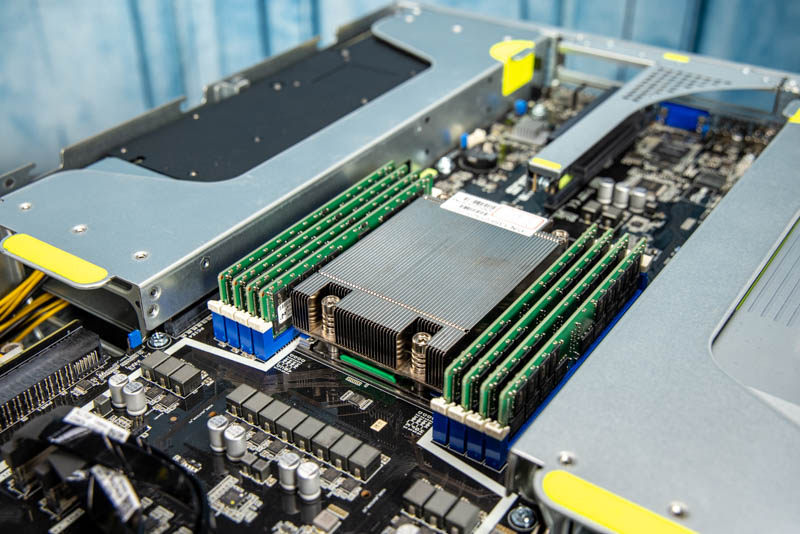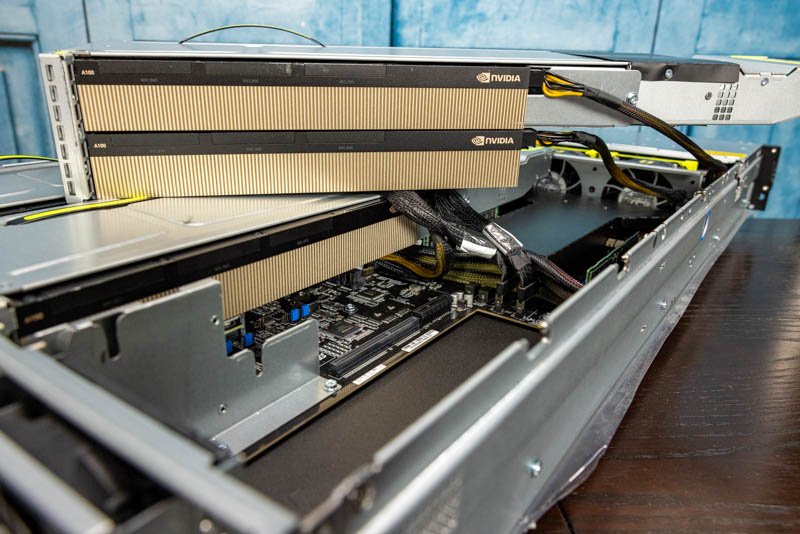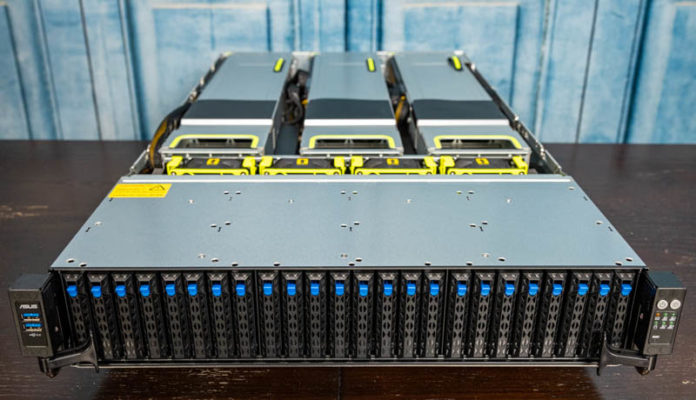Joining the chorus of companies supporting the AMD EPYC 7003 “Milan” series, we have ASUS. ASUS’s approach to the Milan launch is more expansive than simply adding BIOS updates. The company has new platforms as well. One of which we already have a review in-progress on.
ASUS Adds AMD EPYC 7003 Milan Support
There are four new servers, so let us start with the three we are not reviewing (yet.)
- The ASUS RS700A-E11 is a 1U dual EPYC 7003 server with 16 DIMMs per CPU or 32 total. There are 12x NVMe drive slots and three PCIe Gen4 slots, including the ability to use a single dual-slot GPU.
- The RS520A-E11 is a 2U single-socket system with up to 24x NVMe drives, 7x PCIe Gen4 slots. Is a 1U version of this server with 12x NVMe drives and 4x PCIe Gen4 slots. These single-socket platforms are designed to take advantage of the 2:1 or greater consolidation ratios when moving from previous generation Intel Xeon E5/ Xeon Scalable servers to AMD EPYC. One can often replace one or more dual-socket server with a single socket EPYC 7003 especially since that series scales to over 64-cores and has options for “P” series single-socket only discounted SKUs.
We are going to show the fourth server, the RS720A-E11 below, but ASUS also has existing AMD EPYC 7002 “Rome” series solutions that can be upgraded to Milan.

As an example, we reviewed the ASUS ESC4000A-E10 2U AMD EPYC GPU server that was a single-socket solution.
ASUS RS720A-E11-RS24U 4x NVIDIA A100 PCIe Platform
The ASUS RS720A-E11-RS24U is going to be the first system we review from ASUS in this generation. This is a dual AMD EPYC 7003 series platform that supports up to the 280W TDP EPYC 7763. Not only does one get the high-performance and high-core count CPUs, but the system is also designed for PCIe Gen4 accelerators.

For accelerators, we have four NVIDIA A100 PCIe GPUs. Especially with this generation, the PCIe Gen4 is important. Since AMD has been in the market with PCIe Gen4 since Rome in 2019, NVIDIA’s partners have started to design systems around AMD EPYC Milan CPUs with NVIDIA PCIe Gen4 accelerators and networking.
ASUS ASMB10-iKVM
One of the really interesting parts of this launch from a server infrastructure perspective is that ASUS is using the new ASPEED AST2600 BMC. (See Explaining the Baseboard Management Controller or BMC in Servers for more on what a BMC does.)
This is part of the company’s ASMB10-iKVM server-management solution that leverages the AMI MegaRAC SP-X solution. ASUS says the new chip delivers up to 39% faster BMC boot time compared to the AST2500 chipset.
We covered the ASPEED AST2600 Launch in 2019 but this is one of the first releases in servers as that solution gradually entering the market. ASUS is ahead of the curve here.
Final Words
Overall, it is good that ASUS is pushing ahead with its EPYC 7003 “Milan” solutions. Some vendors are mostly just updating the BIOS on old platforms, but ASUS is doing a larger scale refresh, including the BMCs.
We are looking forward to the EPYC 7003 plus NVIDIA A100 combo review soon.




